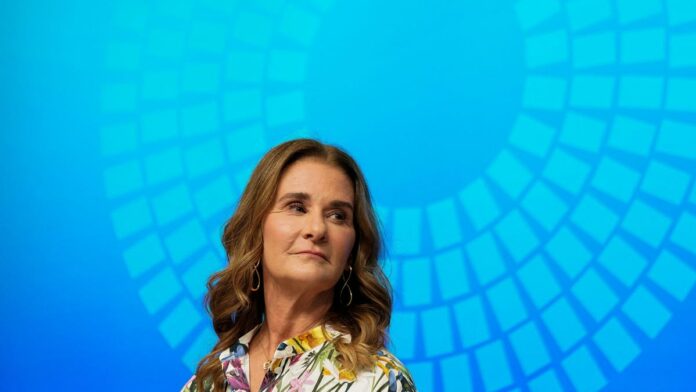Between 2000 and 2015, the global numbers of women dying in childbirth fell steadily for the first time ever, dropping 3% a year. But that progress flatlined in 2016 and the maternal death rate has since increased in many countries, including the United States. Now, somewhere in the world a new mother dies from complications due to childbirth 800 times a day—every two minutes.
This dire trend is laid out in the seventh annual Goalkeepers Report issued today by the Bill & Melinda Gates Foundation, which annually tracks progress on development goals agreed to by 193 world leaders in 2015.
The report also highlights the slow pace of progress in reducing the infant mortality rate, which has fallen only 2% a year since 2000. That means nearly 2 million babies are stillborn each year and approximately 5 million children die before their fifth birthday. An estimated 74% of child deaths occur in the first year of life.
Co-authored by Melinda French Gates and Bill Gates, the Goalkeepers Report goes beyond the bad news, however. It highlights seven low cost and easy-to-implement innovations and medical procedures developed in the last 10 years that address the leading causes of maternal and newborn deaths, ranging from readily available antibiotics to artificial intelligence-enabled portable ultrasound.
Many of the solutions were developed and introduced with some $350 million in annual funding provided by the Gates Foundation, an amount that helped financed what Bill Gates refers to in an essay as “the baby knowledge boom.”
“Over the past decade, the field of child health has advanced faster and farther than I thought I’d see in my lifetime,” he writes. By making these innovations accessible to those who need them most, 2 million additional lives could be saved by 2030 and 6.4 million by 2040, the report estimates.
Still, these innovations are not making their way to the women who need them most. That includes Black and indigenous women in the US, who die at three times the rate of white women, no matter their income or education level. As numerous studies have revealed, nearly twice as many women die giving birth in the US versus in Europe, and Black mothers die in America at rates more than four times as high as Europe.
The remarkable irony, the Gates Foundation writes, is that in the past decade, just as the crisis of maternal and infant mortality was getting worse, it also became more solvable.
New insights, plus new life-saving techniques and technologies
In recent years, physicians have gained new insights into the diseases that kill pregnant women and newborns and an understanding of precisely when and why mothers and babies are dying.
“It’s not an exaggeration to say that researchers have learned more about the health of mothers and babies over the past 10 years than they did in the century before that. Tragically, those solutions aren’t reaching families in the communities where mothers and kids need them most,” Melinda French Gates and Bill Gates write.
The report highlights seven life-saving innovations that could be easily implemented by midwives and birth attendants in underserved nations and communities. Among them:
- interventions that can reduce postpartum hemorrhage, the leading cause of maternal death, by 60%;
- supplements that combat malnutrition in pregnant women and infants;
- treatments for anemia, which affects almost 37% of pregnant women;
- antibiotics that reduce infections during pregnancy, the cause of 23% of maternal deaths in the US.
Meanwhile, AI-enabled portable ultrasound could be easily deployed to monitor high-risk pregnancies in low-resource regions, ensuring that potential problems in pregnancy are diagnosed and addressed early, the report says.
Gates Foundation CEO Mark Suzman blames this disconnect between solutions and the women who need them in large part to a lack of investment in public health, particularly maternal health, and a decade-long decline in international aid overall, battered by the fiscal crisis of 2008, the Ukrainian war, inflation, the covid-19 pandemic, and climate change.
Although there were huge annual increases in international aid devoted to global health in the first 10 years of this century, and huge improvements in global health as a result, “the world lost focus,” Suzman told Quartz in an interview.
Suzman hopes that by shining a light on the crisis with the Goalkeepers Report the world’s governments will take notice, but he acknowledges that health interventions have not been a priority in recent years, either for international aid agencies or for many nations, particularly when it comes to women’s health.
It is not just maternal and infant health that is off track. The Goalkeepers Report reveals that the world has fallen far short of achieving the United Nations Sustainable Development Goals, even though it is halfway to the 2030 endpoint of this universal call to action to end poverty, protect the planet, and ensure that all people enjoy peace and prosperity. The report shows that the world is far off track on 18 indicators—among them poverty, gender equality, education, food security, and health.
UN SDGs: The 2030 deadline looks increasingly unrealistic
The foundation focused on maternal and infant health in this year’s report because the reversal in progress has been so notable, and because there are now affordable solutions that did not exist even 10 years ago, Suzman said.
“One of the tragedies is that there is not a lot of research and development around these issues,” he said.
And, as French Gates writes in the report, “We have seen over and over again that when countries actually prioritize and invest in women’s health, they unleash a powerful engine for progress that can reduce poverty, advance gender equality, and build resilient economies.”


